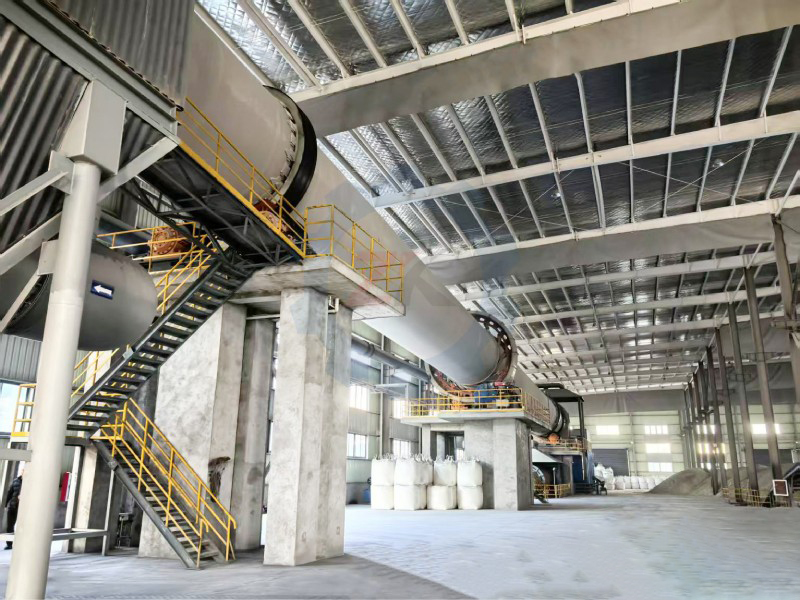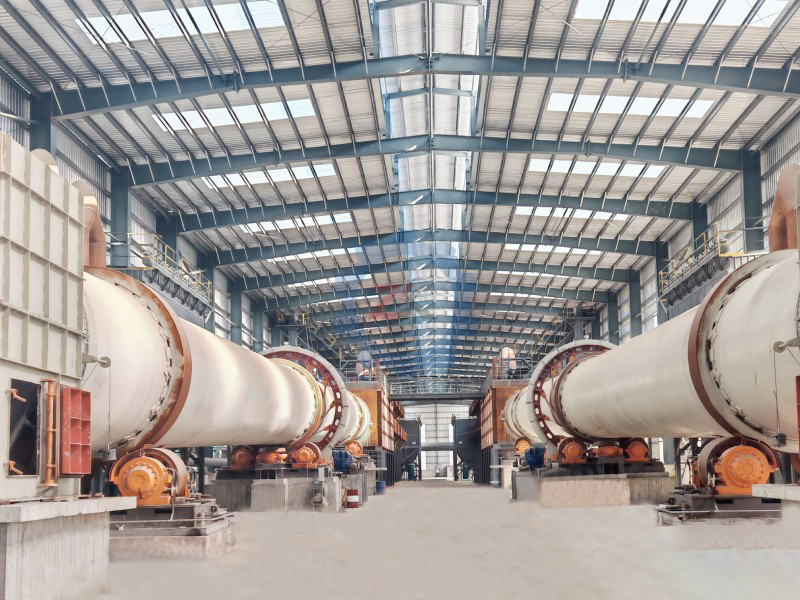In the current wave of industrial development, the efficient utilization of resources and environmental protection have become two themes that cannot be ignored. The rotary kiln calcination process of oxidized antimony ore, as a mature and effective smelting technology, is becoming the mainstream choice for the processing of oxidized antimony ore due to its superior performance and environmental protection advantages.

I. Process Overview: High-temperature reduction, effective extraction
The core of the rotary kiln calcination process for oxidized antimony ore lies in utilizing a high-temperature environment (typically ranging from 800 to 1200℃) to enable the reduction reaction between the antimony oxides (such as Sb₂O₃) in the oxidized antimony ore and the reducing agent (such as carbon), thereby achieving the extraction and enrichment of the antimony element.
This process is particularly suitable for treating oxidized ores containing antimony, such as the oxidized ores of stibnite and antimony ores. Especially when the antimony content in the ore reaches over 10%, the economic benefits are remarkable.
II. Process Flow: Scientific Design, Precise Control
Raw material pre-treatment: Through processes such as crushing, screening, and drying, ensure that the particle size of the ore is uniform and the moisture content is low, laying the foundation for the subsequent processes.
Mixing of ingredients: Reasonably proportion the reducing agent and fluxing agent, mix them evenly to form spherical or block-shaped materials, thereby improving the calcination efficiency.
Rotary kiln calcination: In a horizontal cylindrical rotary kiln, the materials complete the reactions successively in the preheating section, calcination section and cooling section. The inclination angle of the kiln body is 3-5°, and the rotation speed is 0.5-2 r/min, ensuring the material reaction.
Cooling of the dust collector: The calcined products are cooled in a cooling cylinder. The antimony vapor condenses into solid particles, which are collected by an effective dust collection device (such as a bag filter). The slag is quenched with water and then stored or further processed.
Product processing: The crude antimony oxides can be refined through pyrometallurgy or wet processing, ultimately yielding high-purity antimony white or metallic antimony.
III. Key Technical Parameters: Precise Control, Ensuring Efficiency
Firing temperature: 800 - 1200℃. Ensure that the antimony oxides react or volatilize.
Reagent dosage: Carbon-to-oxygen ratio of 1.0 - 1.2:1, ensuring a thorough reduction reaction.
The atmosphere inside the kiln: reducing atmosphere (with CO content ranging from 5% to 10%), to prevent the oxidation of antimony vapor caused by excessive oxygen.
Material particle size: ≤ 10mm, which enhances reaction efficiency.
Rotation speed and inclination angle: 0.5 - 2 r/min, 3 - 5°. Ensure the retention time of the material and its reactivity.
IV. Main Equipment: Effective and stable, intelligent control
Rotary kiln: Core equipment, made of Q235B steel plate with high-alumina refractory brick lining inside, with a diameter of 1.5 - 3 meters and a length of 30 - 60 meters.
Feed system: Ensure that the materials are added uniformly and continuously into the kiln.
Combustion system: Controls temperature and atmosphere.
Dust collection system: Multi-stage dust collection, efficiency ≥ 99%, meeting environmental protection requirements.
Control system: The DCS system conducts real-time monitoring and adjustment to enhance the level of automation.

V. Process Advantages: Large-scale, Environmental-friendly, Intelligent
Adaptable: Capable of processing various grades of antimony oxide ores, suitable for large-scale processing of low-grade ores.
High recovery rate: The recovery rate of antimony can reach 90% - 95%, with significant economic benefits.
Continuous production: Stable production capacity, facilitating large-scale industrial application.
Comprehensive utilization: The slag can be recycled, reducing solid waste emissions.
VI. Challenges and Optimization: Energy Conservation and Consumption Reduction, Environmental Protection Upgrade
Although this process has many advantages, it still faces challenges such as high energy consumption, environmental pressure, and equipment maintenance. In the future, the direction of process optimization will include:
Energy conservation and emission reduction: By using new fire-resistant materials and introducing oxygen-enriched combustion technology, fuel consumption is reduced.
Environmental protection upgrade: Develop a combined system of dry dust collection and wet purification to reduce harmful gas emissions.
Intelligent control: Introduce AI algorithms to optimize the calcination parameters and enhance the process stability.
VII. Application Examples: Successful Practices, Leading the Industry
A certain sintering company in China uses a φ2.5×50m rotary kiln to process an oxidized ore containing 15% antimony. It is equipped with a coal powder combustion system and a bag-type dust collector. The calcination temperature is controlled at 950-1050℃. The antimony recovery rate is 92%. The annual output of Sb₂O₃ is approximately 12,000 tons. The energy consumption per ton of ore is 105 kg of standard coal. After desulfurization, the SO₂ emission concentration in the flue gas is less than 150 mg/m³, which complies with national environmental protection requirements.
The rotary kiln calcination process of antimony oxide ore is demonstrating its advantages of effectiveness, environmental friendliness and intelligence, and is becoming a model for modern industrial resource utilization. In the future, with the continuous advancement of technology, this process will continue to improve in terms of resource utilization rate, environmental friendliness and economic efficiency, helping the industry move towards a more sustainable development path.



















